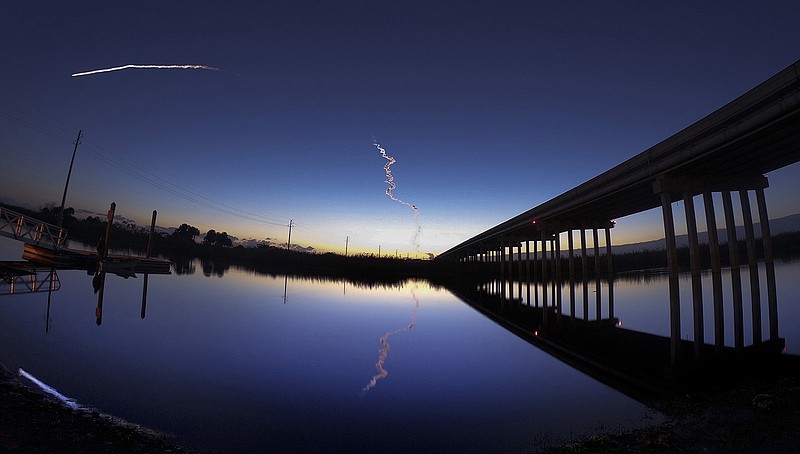ORLANDO, Fla. - After a failed December test flight of its astronaut capsule revealed multiple deep-seated problems within Boeing's testing procedures, the company has decided to repeat the test before putting astronauts on board.
That puts SpaceX, the other private company building an astronaut-rated spacecraft for NASA, on a clear track to become the first to launch American astronauts from U.S. soil since 2011. SpaceX is scheduled to perform its crewed test mission as early as next month.
Boeing's second unpiloted dress rehearsal may not come until later this year.
The decision to repeat the test came following an independent review that issued 61 corrective actions to both Boeing and NASA after the Dec. 20 test flight ended prematurely and revealed multiple flaws within Boeing's system and NASA's oversight.
Boeing then proposed to NASA that it re-do its test, a proposition NASA announced Monday evening it had accepted. The company had the option to propose moving ahead with a mission carrying crew.
"The second uncrewed flight does not relieve Boeing from completing all the actions determined from the joint NASA/Boeing independent review team," NASA said in a statement. "NASA still intends to conduct the needed oversight to make sure those corrective actions are taken."
Starliner's uncrewed demonstration mission late last year quickly devolved when the spacecraft missed a critical maneuver because its internal timer was running 11 hours ahead, sending it to the wrong orbit and causing to miss docking with the International Space Station. Teams couldn't communicate with the spacecraft to fix the problem in time. And, later, when the team tried to hunt for other issues, they discovered another code error that could have caused the capsule to collide with its service module.
The errors were a result of numerous software and hardware issues that should have been caught in testing, but were not. In all, Boeing experienced 49 gaps in testing.
A second uncrewed test flight will allow Boeing to prove Starliner can safely carry crew to the station, a milestone NASA previously said wasn't necessarily a requirement of the test mission, casting doubt as to whether Boeing would move straight ahead to a crewed launch.
"Flying another uncrewed flight will allow us to complete all flight test objectives and evaluate the performance of the second Starliner vehicle at no cost to the taxpayer," Boeing said in a statement.
The development of Starliner is under the taxpayer-funded Commercial Crew program that partnered with SpaceX and Boeing to develop spacecraft for transporting astronauts. But for the second test flight, Boeing took on a $410 million charge earlier this year in the case it had to repeat the test.
Under the Commercial Crew Contract, Boeing got $4.2 billion to develop Starliner, while SpaceX was awarded $2.6 billion for its capsule, Crew Dragon.
NASA said it will use data from both flight tests as part of the process of later certifying Boeing to fly with crew.
"This is exactly why NASA decided to select two partners in the commercial crew effort. Having dissimilar redundancy is key in NASA's approach to maintaining a crew and cargo aboard the space station and to keeping our commitments to international partners," NASA said in a statement. "It also allows our private industry partners to focus on crew safety rather than schedule. The safety of our commercial crew team always will remain as our top priority."

